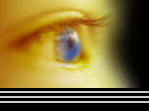What you can expect during a typical eye exam?
Of course, an eye exam tests your visual acuity. But
you may not know that the doctor will also check the health of your eyes, looking for cataracts and glaucoma. An examination
of your eyes can also be a window to other health problems, including diabetes or high blood pressure.
In children, a routine eye exam consists of tests for: near & distance vision, peripheral vision, eye/hand coordination,
the ability to use both eyes together, and the ability of their eyes to move smoothly across a page and shift them quickly
and accurately from one object to another, which are all critical for a child learning to read.
Here are some of the vision problems that may be identified in an eye examination and corrected by proper vision care
and accurate prescriptions.
Amblyopia — Condition most frequently seen in young children and often inaccurately called "lazy
eye." Early detection is critical because the brain adapts to this condition by "turning off" the so-called "lazy" eye and
the loss of vision becomes irreversible.
Astigmatism — Often occurring in conjunction with farsightedness or nearsightedness, an astigmatism
causes the eye to focus incorrectly. Symptoms may include headache, squinting and eyestrain.
Farsightedness (Hyperopia) — Affects near vision. Distance vision may be very good. Condition
makes reading and close work difficult.
Nearsightedness (Myopia) — Seeing at a distance is blurry. Near vision is often quite good. This
condition frequently appears between the ages of 6 and 21 and may get worse until after age 30.
Presbyopia — The eye gradually loses its ability to focus at close range, making reading and close
work difficult. This condition appears in the late 30's and worsens with advancing age, causing the need for bifocal lenses
or reading glasses.
Basic Eye Exam Starts at $55.00
Contact Exam Starts at $65.00

